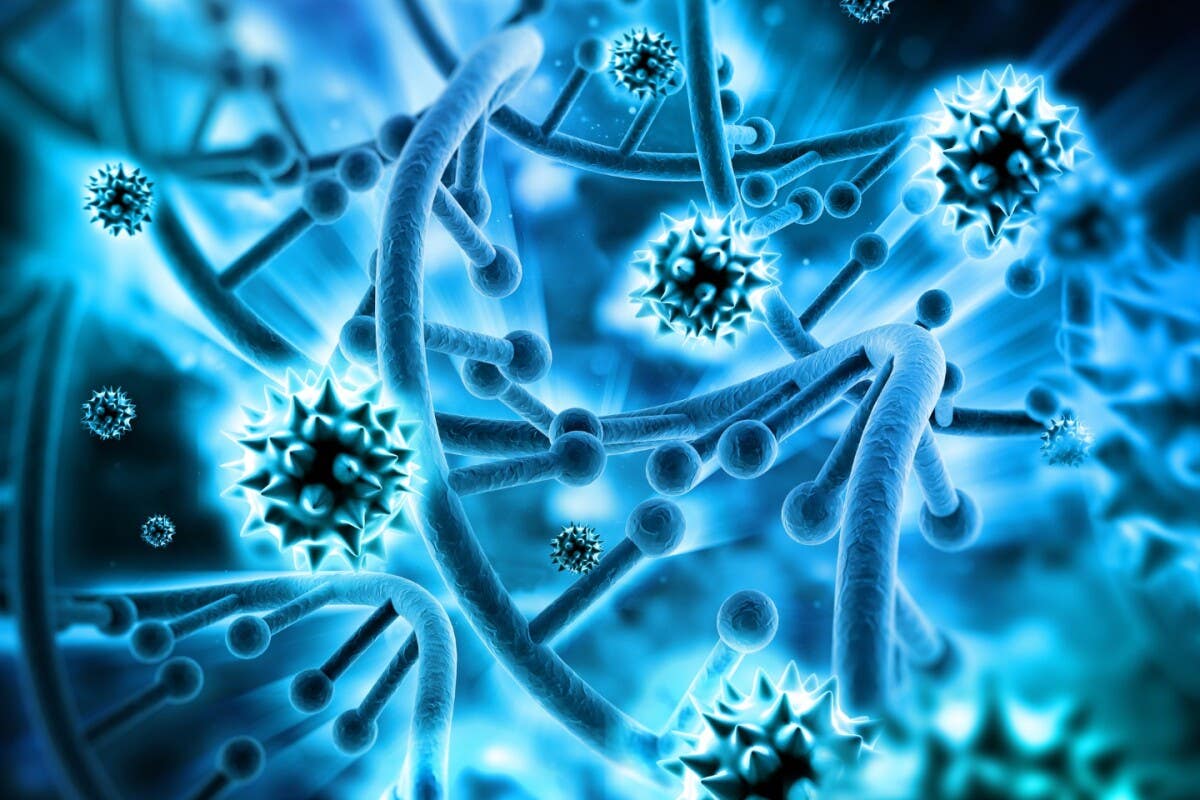Game-changing molecule turns HIV against itself to halt activity
A molecule produced by HIV itself could lead to new gene therapy that forces the virus into long-term sleep, ending daily treatment.

Scientists discover a hidden HIV molecule that could lock the virus into deep sleep with one-time gene therapy. (CREDIT: Deposit Photos)
In the ongoing fight against HIV, scientists have taken a new step toward long-term control of the virus. Researchers have found a way to force HIV into a deep, long-lasting sleep by using a molecule produced by the virus itself. This discovery could lead to future gene therapies that might remove the need for daily antiviral drugs and stop the virus from ever waking up again.
For decades, the biggest challenge in curing HIV has been its ability to hide. After someone gets infected, the virus places copies of its genetic material inside certain immune cells. These infected cells become what scientists call a “latent reservoir.” The virus in these reservoirs doesn’t multiply, so it escapes detection by the immune system and current drugs. But if someone stops taking their antiretroviral therapy—even after years—the virus can wake up and start spreading again. That’s where this new research comes in.
A Molecule Hidden Within the Virus
Scientists at Johns Hopkins Medicine have identified a molecule within HIV’s own genetic code that helps keep the virus asleep. This molecule is called an “antisense transcript,” or AST. AST is not new to science, but its role in HIV has just started to become clear. It is produced naturally by HIV and works by shutting down the virus’s own ability to copy itself.
In earlier studies, the research team showed that AST changes the structure of chromatin, a material made of DNA and protein found in cells. By doing so, AST closes off access to the section of HIV’s genetic code that allows it to start multiplying. This “closed chromatin” state effectively locks the virus in place.
The latest research takes this understanding even further. By adding more AST into infected immune cells, scientists were able to prevent HIV from reactivating—even when the cells were exposed to strong signals that normally wake the virus up.
Dr. Fabio Romerio, the study's lead researcher, says, “Our findings add to a growing body of evidence that may help develop a gene therapy that boosts AST production.”
Related Stories
A New Kind of HIV Therapy
Antiretroviral therapy (ART) has saved millions of lives by stopping HIV from copying itself. But ART must be taken every day, for life. The drugs can cause side effects, and they do not remove the virus from the body. In contrast, the approach described in this new research could offer a one-time gene therapy that forces HIV into permanent latency—a form of deep sleep where it can’t harm the person or spread.
Dr. Rui Li, the first author of the study, explains, “Our aim is to find a way to provide a lasting, durable treatment for HIV.” To test how AST works, scientists first used lab-grown human immune cells called CD4+ T cells. These are the same cells HIV attacks in the body. The researchers genetically engineered the cells so they would make large amounts of AST. Then they infected the cells with HIV and tracked how much the virus tried to reproduce.
They used a special tool—a glowing green protein called GFP—that lights up when HIV is active. As the levels of AST rose, the green glow faded until it nearly disappeared. This meant that HIV had gone silent and was no longer trying to make copies of itself.
Mapping the Parts That Matter
Next, the researchers asked a more detailed question: Which parts of the AST molecule are the most important for making HIV go quiet?
To find out, they made several versions of AST, each with slight changes or mutations. Then they put these mutated ASTs into the immune cells and measured how well they stopped HIV from becoming active.
They also used a tool called flow cytometry. This technique uses a laser to measure physical and chemical features of cells. By using it, the scientists could tell which versions of AST worked best and how they changed the behavior of the cells.
In another part of the study, the team worked with real cells taken from 15 people living with HIV. These people were already taking antiretroviral therapy to control the virus. Scientists collected immune cells from their blood, then used a method to insert DNA that makes AST into those cells. Over the next four days, the HIV in those cells stayed silent. Even when the researchers tried to wake the virus using powerful stimulants, it did not reactivate.
After four days, the AST-making DNA broke down naturally inside the cells. This shows that AST doesn’t stay in the body forever unless engineered to do so—but with gene therapy, that could change.
Unlocking HIV’s Weak Spots
The team didn’t stop at studying AST’s effects. They also looked at how AST works at the molecular level. Using a method that searches for proteins that interact with a molecule, the scientists found a group of host cell proteins that link to AST. Some of these were already known to help keep HIV dormant, but others were new discoveries. These protein partners may hold more clues to how HIV can be locked into latency for good. The more scientists understand how AST works with the body’s own machinery, the better they can design future treatments.
Dr. Romerio calls AST “a first-in-class biological molecule” because it shows a new way to control HIV—not by killing it, but by stopping it from waking up.
The Bigger Picture
There are about 1.2 million people living with HIV in the United States today, and nearly 5,000 die from AIDS-related causes each year. Around the world, 39.9 million people live with the virus, and about 630,000 die from it each year. Though current drugs can keep the virus under control, they do not cure it.
This new research could change that future. If scientists can develop a gene therapy based on AST, it might one day offer a cure or at least a treatment that works with a single dose. That would eliminate the need for daily pills and reduce the risk of drug side effects or missed doses.
More research is still needed. Gene therapy is complex and must be tested for safety and effectiveness in large human trials. But this discovery opens a promising new path. Rather than chasing the virus with drugs, scientists could one day lull it into permanent sleep—and keep it there.
The Road Ahead
The next steps include figuring out how to safely deliver AST to infected cells in the body. Researchers may also explore ways to make AST more stable so it lasts longer inside cells. With time, these efforts could lead to a powerful tool in the global fight against HIV. As science continues to explore the virus’s own secrets, solutions may come not from destroying HIV, but from using its own tools against it.
Research findings are available online in the journal Science Advances.
Note: The article above provided above by The Brighter Side of News.
Like these kind of feel good stories? Get The Brighter Side of News' newsletter.



